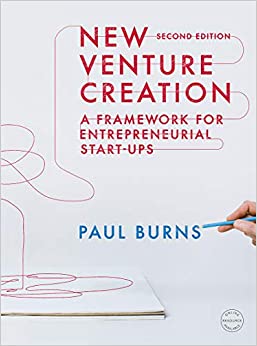Question
Gloopy Ketchup Company makes and sells bottles of tomato ketchup. Annual demand is 24,000bottles. For each bottle of ketchup they need six pounds of tomatoes,
Gloopy Ketchup Company makes and sells bottles of tomato ketchup. Annual demand is 24,000bottles. For each bottle of ketchup they need six pounds of tomatoes, which they normallypurchase for $0.30 per pound. Ordering costs are $180 per order of tomatoes, and carrying costsare $1 per pound. Lead time for ordering is three days (the time between placing the order andreceiving the tomatoes.)Do the following:1. Calculate the EOQ (economic order quantity) for the tomatoes.2. Find the number of orders Gloopy must place to satisfy the EOQ, and also find thereorder point. Use 360 days for a year, not 365 days.3. Now assume that stockout costs are $1.90 per pound of tomatoes. The probability ofneeding exactly the EOQ per period is 65%, but there is a 10% chance they will need an International Research Journal of Applied Finance ISSN 2229 ISSN 2229 6891Vol. V, S Vol. V, September eptember eptember2014 2014 Case Study Series Case Study SeriesPage2extra 200 pounds, and a 2% chance they will need an extra 400 pounds above the EOQ.Find the optimal amount of safety stock to carry given the above information.4. Refer to the original information and the EOQ you calculated in part 1. Assume that youwere incorrect about the coststhat the ordering cost is really $160 per order and thecarrying cost is $1.20 per pound. Find the cost of prediction error using only the relevantcosts (ordering and carrying costs.)5. Now let us move from the purchasing to the production aspect of the Gloopy KetchupCompany. Setup costs for bottles of ketchup are $135 per setup and carrying cost for abottle of ketchup is $2 per bottle. Gloopy uses a MRP (materials requirements planning)system to produce ketchup in batches of 2,000 bottles each month (one batch per month).Gloopys variable product costs excluding the cost of the tomatoes (the direct material)are $1.50 per bottle. What is the total annual cost of making 24,000 bottles of ketchup(variable product cost + setup cost + carrying cost)?6. If Gloopy used EOQ instead of MRP for the production of ketchup, how many bottles ofketchup would they make per batch?7. Based on the EOQ from #6, by how much would the annual cost of production forketchup increase or decrease if Gloopy switched from the MRP to the EOQ system?Based on your calculations, should they switch? (Round number of setups per year up tonext integer and remember to use that to recalculate number of units to produce in eachrun.)8. Now Gloopy is considering switching to a JIT (Just in Time) system. After intenseexamination of their own manufacturing system and how it would change in a JITsystem, they have decided that they would make 400 bottles of ketchup per batch.Assuming carrying costs and variable product costs are not affected by the change to theJIT system, by how much would the setup costs have to decrease (per setup) to makeGloopy indifferent between the JIT and the MRP system?9. Name two things you think might reduce the setup costs for Gloopy Ketchup if theyswitch to the JIT system. (Although the answer is subjective, it should also be realistic.For example, dont say you will reduce setup costs by hiring Harry Potter for $10 to usehis magic to make the machines costlessly set themselves up for production.)
Step by Step Solution
There are 3 Steps involved in it
Step: 1

Get Instant Access to Expert-Tailored Solutions
See step-by-step solutions with expert insights and AI powered tools for academic success
Step: 2

Step: 3

Ace Your Homework with AI
Get the answers you need in no time with our AI-driven, step-by-step assistance
Get Started


